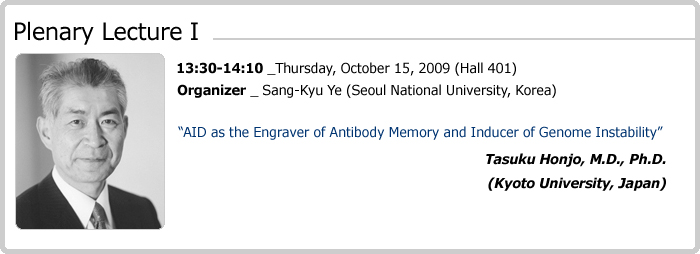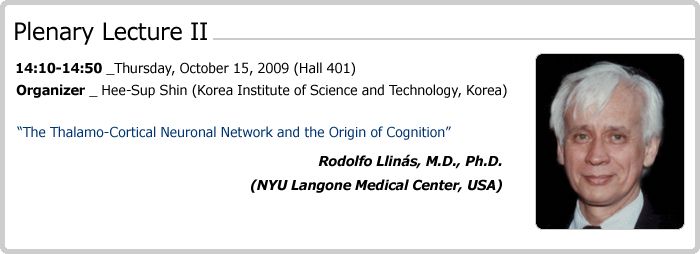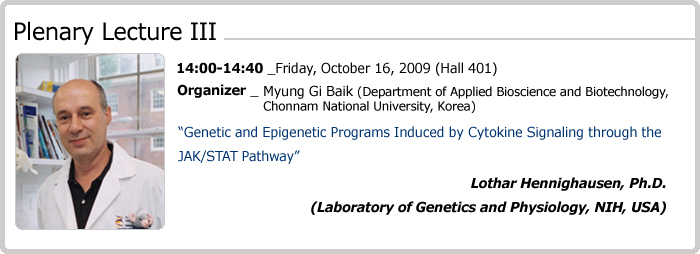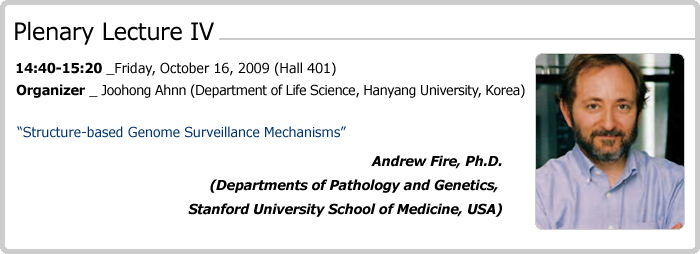|
|
 |
 |
 |
 |
| |
Tasuku Honjo graduated from Kyoto University Faculty of Medicine in 1966 (M.D.). After obtaining Ph.D. in Biochimistry with Dr. O. Hayaishi), he spent 4 years in U.S.A. as a postdoctoral fellow first in Carnegie Institution of Washington (Dr. D. Brown), and then in NIH (Dr. P. Leder) where he initiated studies on immunoglobulin genes. He returned to Tokyo University as an assistant professor in 1974, and then moved to Osaka University School of Medicine as Professor of Genetics in 1979. He succeeded to Dr. O. Hayaishi after his retirement at Department of Medical Chemistry in Kyoto University. He also served as Dean of Medical School (1996-2000 and 2004-2005). Currently, he is Professor of Department of Immunology and Genomic Medicine, Kyoto University and also Executive Member of Council for Science and Technology Policy, Cabinet Office.
Dr. Honjo is well known for his discovery of activation-induced cytidine deaminase that is essential for class switch recombination and somatic hypermutation. He has established the basic conceptual framework of class switch recombination starting from discovery of DNA deletion (1978) and S regions (1980), followed by elucidation of the whole mouse immunoglobulin heavy-chain locus. His contribution further extended to cDNA cloning of IL-4 and IL-5 cytokines involved in class switching and IL-2 receptor alpha chain. Aside from class switching recombination, he discovered PD-1 (program cell death 1), a negative coreceptor at the effector phase of immune response and showed that PD-1 modulation contributes to treatments of viral infection, tumor and autoimmunity. In addition, he is known to be a discoverer of RBP-J, a nuclear protein that interacts with the intracellular domain of Notch in the nucleus. Notch/RBP-J signaling has been shown to regulate a variety of cell lineage commitment including T and B cells.
For these contributions, Dr. Honjo has received many awards, including the Noguchi Hideyo Memorial Prize for Medicine (1981), Imperial Prize, and Japan Academy Prize (1996). He is an honorary member of American Association of Immunologists. Honored by the Japanese Government as a person of cultural merits (2000). Elected as a foreign associate of National Academy of Sciences, USA in 2001, as a member of Leopoldina, the German Academy of Natural Scientists in 2003, and also as a member of Japan Academy in 2005.
|
 |
| |
Professor Rodolfo R. Llinas has served as the Chairman of the Department of Physiology and Neuroscience since 1976 and has been the Thomas and Suzanne Murphy Professor of Neuroscience, at New York University School of Medicine since 1985.He received his medical degree from the Javeriana University (Colombia) and his Ph.D. from the Australian National University (Australia).He trained as a Postdoctoral Research Fellow at Massachusetts General Hospital and the Department of Physiology at the University of Minnesota.He has been a member of the National Academy of Sciences (USA) since 1986 as well as the American Academy of Arts and Sciences, the American Philosophical Society, the French Academy of Sciences and the Spanish Royal Academy of Medicine.Professor Llinas has contributed over 500 publications to brain research, has been awarded six honorary degrees.
Dr. Llinas research encompasses many aspects of neuroscience - from the study of depolarization release coupling in squid giant synapses where he first demonstrated the biophysical properties of calcium currents responsible for transmitter release, to functional brain imaging.He was the first to describe calcium currents in vertebrate neurons, and to identify the high threshold dendritic spikes in Purkinje cells, and their dependence on P-calcium channels type as well as a low threshold the T-calcium current in the thalamus and inferior olive neurons. Llinas described the complete electrophysiology of the cerebellar neuronal circuit. This was the first time that the functional organization for a major center in the brain had been deciphered in its entirety. Working in the in-vitro brain slices and in the in-vitro isolated whole rodent brain he studied thalamo-cortical loop physiology and its relation to cognition using voltage dependent dye imaging. These studies were confirmed in the human brain using non-invasive magnetoencephalography (MEG) imaging, which he has pioneered over the last fifteen years, and which has opened new horizons in the study of human cognition and neuropsychiatry. |
 |
| |
Dr. Lothar Hennighausen is a member of the Senior Biomedical Research Service and the Chief of the Laboratory of Genetics and Physiology at the National Institutes of Health, in Bethesda where he has been since 1985. A native of a small town in Germany, he performed undergraduate work in Germany and Scotland, and earned his Ph.D. in Genetics with magna cum laude from the University of Cologne (Germany) in 1982. He immigrated to the United States in 1983 to conduct research with Dr. Philip Leder at Harvard. Dr. Hennighausen leads a research laboratory that explores genetic circuitry in stem cells, organ development and disease using experimental mouse genetics. He has repeatedly performed groundbreaking research whether it be the more prosaic investigations of milk protein gene expression or the wide-reaching explorations of cytokine signaling through the transcription factor STAT5. Dr. Hennighausen has made seminal observations about development of the mammary gland, which is reflected in the numerous citations of his research and inclusion of his work in basic texts. The tools he has developed are widely disseminated and contribute to the research efforts of laboratories worldwide. Dr. Hennighausen has received scientific awards, including the Senior Humboldt Research Award, a Mercator Professorship by the Deutsche Forschungsgemeinschaft and a Distinguished World Class Scholarship by the Korea Science and Engineering Foundation. He holds several patents and has published more than 220 papers. Dr. Hennighausen has trained more than 50 scientists and former members of his laboratory hold positions in academia, industry and government on three continents. Dr. Hennighausen takes the same enthusiastic approach to activities outside the lab as he does inside. He is an avid ultra long distance cyclist and finisher of the several 1200km events, including Paris-Brest-Paris. He is married to Dr. Priscilla Furth, a cancer researcher and Professor at the Lombardi Comprehensive Cancer Center at Georgetown University. He has a grown son living in Germany and three children in the U.S. Molly graduated in theater management from Ithaca College and is currently a stage manager, Zach graduated in electrical engineering from the United States Coast Guard Academy and is an officer stationed in the Pacific, and Hannah, an ardent Field Hockey player, is at American University in DC and majors in international business and accounting. |
 |
| |
Dr. Andrew Z. Fire is a professor of pathology and genetics Departments in the Stanford University School of Medicine. Dr. Fire is currently a member of US National Academy of Sciences, American Academy of Arts and Sciences and Institute of Medicine. He is a leading world authority on the mechanism of gene silencing and discovered RNA interference (RNAi) while at Carnegie Institution of Washington. Dr. Fire shared the 2006 Nobel Prize with Dr. Craig C. Mello for the major breakthrough discovery in modern molecular biology that double-stranded RNA can quash the activity of specific genes. RNAi is now used as a research tool and for the development of products that could combat diseases such as cancer and HIV. Genome wide screening using RNAi libraries help researchers to learn more about global questions in systems biology, elucidating the nature and role of the complex, often interrelated pathways and signaling networks at work in different organisms including plants, nematodes, Drosophila etc. Dr. Fire received an A.B. in mathematics from the University of California, Berkeley, in 1978. He went to the Massachusetts Institute of Technology (MIT) for graduate work, studying RNA polymerase type 2 transcription under Phillip Sharp, a Nobel laureate of 1993. Dr. Fire received his Ph.D. from MIT in 1983 and won a Helen Hay Whitney Fellowship to conduct research on the nematode Caenorhabditis elegans at the Medical Research Council Laboratory of Molecular Biology in Cambridge, England, under the guidance of Sydney Brenner, who is also a Noble laureate of 2002. |
|
|
 |
|
|

